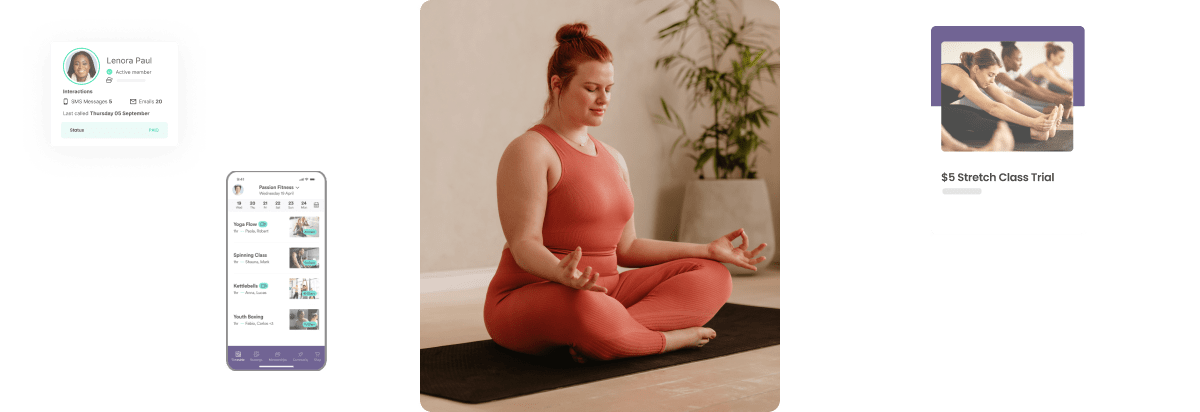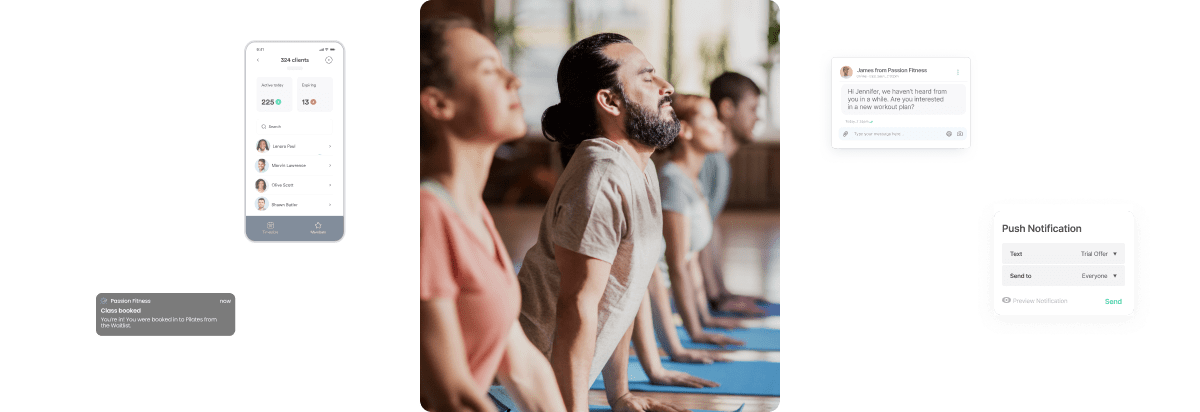Smart decisions are key to the success of any business. As a fitness entrepreneur, you’re no different! If you want to stay on top of your performance in the long run, identify opportunities and act upon them in real time, then these are the numbers you need to know, now!
1. Total Bookings
The first metric you should analyze on a week by week basis is the total number of bookings made. By identifying the percentage increase or decrease in total bookings compared with the week prior, you can dig deeper into the source of change and take action in real time.
For example, if your bookings have decreased, attempt to find the source of the decrease. Were bookings down consistently across all days, times and events? Or is there one day / time / event which decreased significantly?
By identifying the reason behind the decrease in bookings, you can create a plan of action to get back on track. If, for example, your 9am “Metcon” class bookings decreased significantly, you might plan to send a series of motivational push notifications to previous attendees, encouraging bookings.
2. Bookings Vs Capacity
It’s important to track the total number of bookings made each day, versus the total booking capacity that has been set for that particular day. By doing so, you can learn, adapt and optimize your schedule for the week ahead.
For example, if we had the capacity for 100 bookings on Monday, and a total of 83 bookings were made for the day, we met 83% of our booking capacity. However, if we had capacity for 50 bookings on Friday, and just 18 bookings in total made for the day, we only met 36% of our booking capacity.
In the latter scenario, we might compare the classes, times and trainers for the low performing Friday bookings, with higher performing days, such as Monday. This will help us to identify opportunities to increase bookings. Perhaps Monday morning classes have a considerably lower number of bookings than Friday morning classes. In this case, could we test a new class time?
3. Total Revenue
Do you track all money coming into your business, on a weekly basis? By doing so, you’ll have a better idea of whether you’re on track to meet your revenue projections for the month. You’ll also have better insight into the true growth drivers behind your business.
For example, let’s say your revenue has increased 29% since the previous week. You may wish to dive into this number further by using a fitness business reporting tool. From here, you can break down your revenue figure by:
- Class / Appointment / Course
- Membership
- Product
- Trainer
- Custom charges
In this case, you can identify where your increase in revenue has come from and where opportunities for new revenue streams may exist.
4. Weekly Recurring Revenue
This figure represents the total amount of revenue generated from subscription payments, over the previous week. When you record your recurring revenue each week, you can eliminate concerns that could hinder your business performance further down the line.
The Customer
Engagement Playbook
for Your Fitness
Business
Discover more If your weekly recurring revenue has decreased, you should check the following aspects of your business:
- Did any recurring subscriptions payments fail last week?
- Were new membership sign ups down last week?
- Did a number of members choose not to renew their membership?
In scenario one, for example, Glofox clients would check their “Failed Payments” report. From here, they can see a list of any members with a failed payment, making it easier to rectify the situation.
5. New Signups
This is the number of new, first time sign ups or registrations at your gym or studio over the previous week. By tracking the increase (or decrease in) this number on a weekly basis, you can avoid surprises down the line and continue to improve upon your member acquisition strategy.
Let’s say your sign ups are down by 28% compared with the previous week, an indication that our acquisition strategy needs a little more work. In this case, you might ask yourself the following questions:
- How long does it take you to turn an inquiry into a sign up? i.e. Is there room for improvement in your sales process?
- Do you encourage potential members to sign up via your mobile app or website portal? You can easily do so through your social media accounts, or even with a targeted Facebook Ad Campaign.
6. Memberships Sold
Here, we’re talking about tracking the total number of memberships purchased last week, whilst also identifying the percentage increase or decrease in memberships sold when compared with the week prior.
If, for example, our membership sales are down 15% on the previous week, we may wish to create a “Revenue by Membership” Report, to dig a little deeper.
By doing so, you can identify:
- Top selling memberships
- Membership plans which may need adjustments or additional promotion.
7. Expirations and Renewals
Do you have members set to set to expire or renew their membership in the coming week? How many of these members are on subscription memberships and how many could potentially be lost?
It’s vital that you stay on top of expiring members, in particular, those who are not on a subscription membership.
Don’t forget! A push notification, sent to the right member at the right time, could be the difference between a membership upgrade and a lost member!
8. New Membership Signups
Are you currently tracking new membership sign ups over the previous week and the type of membership they purchased? Based off this information, you can identify and keep track of future up sell opportunities.
For example, if a client purchases an introductory monthly membership (non subscription), what are the next steps you could take to ensure they work their way up to your unlimited subscription membership?
At this point, Glofox clients make the most of engagement tools to keep members happy, motivated and coming back for more!
The Customer
Engagement Playbook
for Your Fitness
Business
connects with its customers on a deeper level than a
simple business and consumer relationship.






![[eBook] How to Find, Hire & Grow a Team of Amazing Coaches](https://www.glofox.com/wp-content/uploads/2017/06/Copy20of20Copy20of20BOI20Startlab2028229-3-400x267.png)






